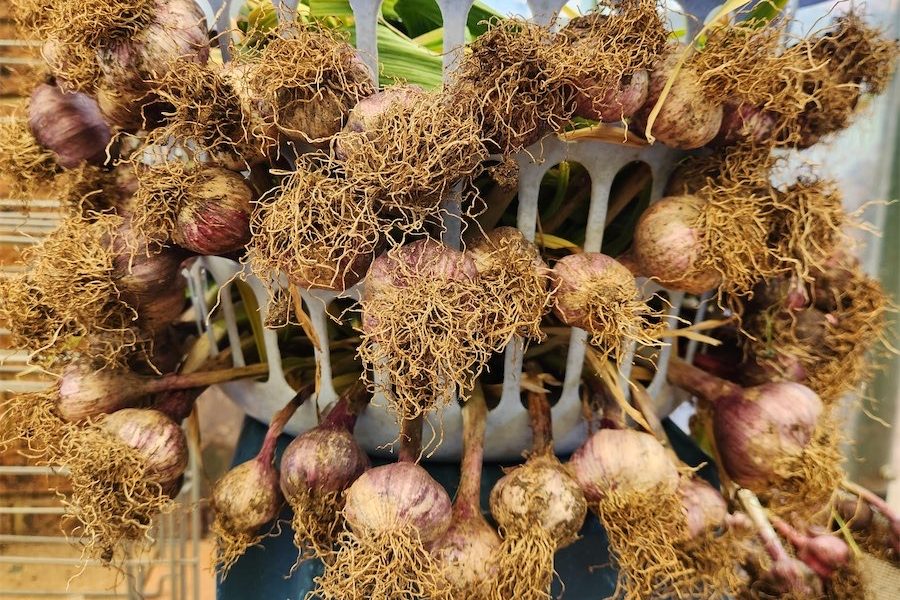
The vegetable patch should be in full swing now as the heat has arrived; all the tomatoes, zucchini, corn and pumpkins can go into the garden, writes gardening columnist JACKIE WARBURTON.

TOMATOES will need a trestle or something to climb to keep the fruit off the ground and away from night-crawling insects.
Zucchini will grow at least one metre wide and will need room. I would think one or two plants for a family of four would be plenty and there’ll still be some left over for relish!
Planting corn is best once the soil has warmed up. Sow seeds in blocks for wind pollination and water them while they grow.
NOW’S also the time to pull and dry garlic. Garlic can be a little tricky to know what’s happening underground. In harvesting timing is essential, so when half the leaves of a garlic plant have gone brown, it’s time to harvest them.
Reduce watering for a few days before pulling them out of the ground.
I grew a hard-neck Monaro purple this year and will be harvesting the flower stems (scapes), too. They grow about four to six weeks before the bulb is mature. The stems can be stiff or curly and can be removed to help the garlic bulb put on growth before harvesting.
When the garlic is out of the ground, storing and drying quickly will help with the length of storage and prevent mold or rot.
Last time I used an old basket to dry my garlic. It worked well, but another method is to place the bulbs on a flat surface with good airflow. To store garlic, the bulbs should be free of dirt and lightly brushed off, if needed. The long leaves should not be cut off, they are still putting goodness into the bulb.

CHINESE snowball, which is flowering now, is such an undervalued plant.
Viburnum macrocephalum is deciduous and has the characteristic viburnum teardrop-shaped leaf. Like all viburnum, it is drought tolerant when established.
In flower, it’s a show stopper with its large spherical hydrangea-like, brilliant white flowers that sit above the foliage.
It’s a good backdrop plant in the garden and to keep it in shape, cut a third of the bush after flowering to keep the growth compact. Chinese snowballs don’t do well in clay soils and don’t like wet feet, so drainage is important.
It prefers an acid soil with lots of organic matter added. It needs to be in partial shade and needs at least six hours of sun to grow well. If there’s too much shade, it will grow leggy, and the blooms will be sparse. The best time for fertilising is straight after flowering with a general, all-purpose fertiliser.
Another interesting viburnum that grows successfully in our region is V. Carlesii, which flowers in winter and has a knockout fragrance and a beautiful autumnal colour.
If there’s room in the garden, then look at Viburnum burkwoodii as an old Canberra favourite. It’s really tough when established.
If space is at a premium then Viburnum daviddii is a favourite. A no-prune shrub, it creates its own natural dome shape to a metre tall with dark, glossy leaves and blue berries in the autumn.
Watering in the warmer and drier months will keep them growing well and, hopefully, thrips on viburnum hedges will not be as bad an issue now the drier times are ahead.
Jottings
- Deadhead and feed roses for continuing blooms.
- Sprinkle diatomaceous around seedings to keep insects away.
- Weed and mulch before summer comes.
Who can be trusted?
In a world of spin and confusion, there’s never been a more important time to support independent journalism in Canberra.
If you trust our work online and want to enforce the power of independent voices, I invite you to make a small contribution.
Every dollar of support is invested back into our journalism to help keep citynews.com.au strong and free.
Thank you,
Ian Meikle, editor





Leave a Reply